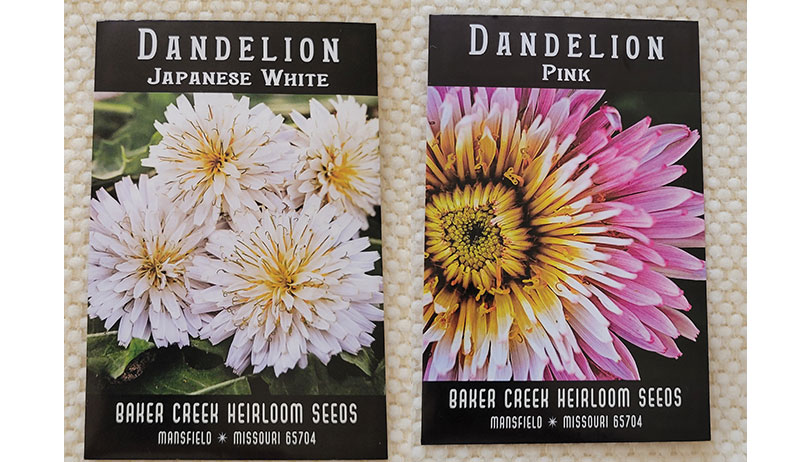
I was standing in the checkout line in my local big box home improvement/garden store recently when I noticed stacked next to me shoulder high bags of lawn “weed and feed” for fall application.
Pictured on the front of the bags was a fist full of dead dandelions. I cringed.
Ever since I read Anita Sanchez’s book, The Teeth of the Lion, I’ve been in love with dandelions. In her small (121 pages) book, Sanchez, a senior environmental educator at the New York Department of Environmental Conservation, makes a compelling case for, if not loving, then highly respecting the common dandelion.
Read more: Is it time to rethink what we consider “weeds” in our yard and garden?
Dandelion Flowers Are Lovely
Dandelions love sun. They will tolerate some dappled shade, but they need sun to thrive.
One good reason to love dandelions is their bright, cheerful flowers after a long winter. Bees and other insects are hungry for nutrient-rich nectar as they emerge in the early spring. The dandelion is one of the first flowers to bloom, providing them much needed food.
The dandelion’s flower is really a cluster of many individual flowers. Each has its own seed, providing a feast of nectar within each flower head.
You will be glad you left your dandelions alone when the native bees and other insects show up in your garden to pollinate flowers and vegetables. They survived to work for your benefit in large part because they were well fed by dandelions.
Did you know that back in the 19th and early 20th centuries our grandparents planted dandelions for show? They even exhibited them at county fairs and other garden competitions.
In Japan growers love their dandelions so much they bred them in colors of pink, white and red. Today, several companies specializing in rare seeds offer the white and pink dandelion seed as well as a French culinary dandelion seed that claims to produce less bitter greens.

Dandelions Are Vitamin Powerhouses
Another reason to love dandelions is for their use to humans. Dandelions are not native to North America. They were brought here by Europeans who knew their value as a medicinal plant.
Dandelions can be found on every continent of the world except Antarctica.
Early man didn’t know dandelions housed a vitamin powerhouse. The plant holds more Vitamin C than tomatoes, more Vitamin A than oranges, and tons of vitamins D, K and B complex. Dandelions are also a great source of protein, iron, riboflavin, calcium and thiamine.
Bt what our forebears did know from long experience was that, even before the snow melted, the dandelion put up a rosette of green leaves and deep roots. So they made a spring tonic made from those leaves and roots to heal a variety of possibly fatal late winter health issues (think scurvy and jaundice to name just two).
Your great great grandparents may have survived long enough to have children because they grew dandelions in their gardens.
Read more: Keep dandelions around for the sake of local bee populations.
Dandelions Are Invaluable to the Ecosystem
One of the very best reasons to love dandelions is their value in our ecosystem.
Dandelions are also a seral species. Seral species are hardy plants that quickly move into disturbed soils to begin the renewal of an ecosystem after a fire, flood, insect invasion or other natural or manmade disaster.
Imagine a forest after a major fire. Nothing remains of the forest but ash and skeletal tree trunks. The dry, hard dandelion seed, just 1/8 inch long and covered in microscopic barbs, is born on the wind via its puff ball “parachute” to the blackened soil.
It glides to earth, parachute intact above it, swaying gently in the breeze. The swaying action helps the barbed seed drill into the soil to begin the process of germination.
With just a little bit of moisture, the seed quickly germinates. The plant develops not only a deep tap root, but a web of tiny rootlets searching for nutrients to power the dandelion’s first set of leaves.
In the process these roots “till” the soil. They open the ground for other seeds to germinate and begin the forest’s renewal process.
That first set of dandelion leaves decomposes and fertilizes the barren soil. Grasses move in, then shrubs and finally trees, which shade out the dandelion. With the shade of the new forest, the dandelions’ work is done, and it slowly fades away.




